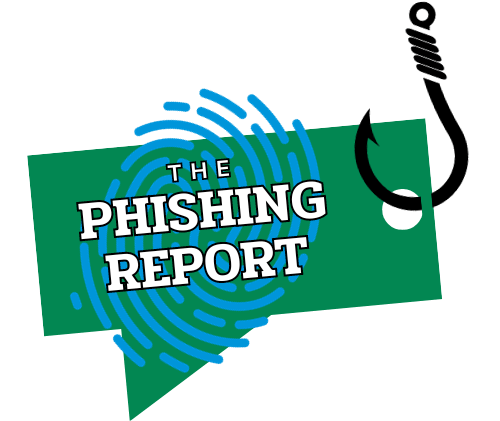Have you ever wondered what separates an efficient server infrastructure from a chaotic one? As you’re managing remote servers, you’ll quickly discover that following proven best practices isn’t just helpful—it’s vital for maintaining stability and security. Whether you’re overseeing a single server or an extensive network, you’ll need to master four fundamental aspects that can make or break your infrastructure’s success. Let’s explore these essential practices that will transform your approach to server management and help you avoid the costly mistakes that even experienced administrators sometimes make.
Key Takeaways
- Implement SSH key authentication and two-factor authentication for secure remote access while disabling password-based logins.
- Set up comprehensive monitoring systems to track server performance metrics and receive immediate alerts for critical issues.
- Document all configuration changes thoroughly, including timestamps, admin details, and specific modifications made to the system.
- Automate routine maintenance tasks like updates, patches, and backups to ensure consistent system management and reduce human error.
- Establish strict access control policies based on least privilege principles and maintain detailed logs of all remote connections.
Implement Robust Security Protocols
Consistently maintaining robust security protocols stands as the cornerstone of effective remote server management. You’ll need to implement multiple layers of protection to safeguard your infrastructure against unauthorized access and potential breaches.
Start by establishing secure access methods through SSH keys rather than password authentication. You should configure two-factor authentication (2FA) for all administrative accounts and maintain strict access control lists (ACLs) that follow the principle of least privilege. Verify you’re using data encryption for all remote connections, including management interfaces and data transfers.
Set up thorough logging and monitoring systems to track access attempts, system changes, and potential security incidents. You’ll want to regularly audit these logs for suspicious activities and configure automated alerts for unusual patterns. Keep your firewall rules updated and restrict access to management ports to specific IP ranges or VPN connections only.
Implement regular security patches and updates, maintaining a systematic approach to vulnerability management. You should also enforce strong password policies, rotate credentials periodically, and disable unused services and ports. Remember to regularly backup your security configurations and maintain documented procedures for emergency access scenarios.
Monitor Server Performance Metrics
Tracking thorough server performance metrics enables you to maintain ideal operation and prevent potential system failures before they occur. You’ll need to analyze resource utilization across CPU, memory, disk space, and network bandwidth to establish baseline performance patterns. Set up automated monitoring tools that alert you when metrics deviate from normal ranges.
To effectively track system anomalies, implement extensive logging systems that capture both hardware and software performance data. Monitor key indicators such as response times, error rates, and application performance metrics. You’ll want to establish thresholds for critical metrics and configure alerts when these thresholds are breached.
Pay special attention to trends in resource consumption over time. Track metrics like CPU load averages, memory usage patterns, disk I/O rates, and network throughput. Use visualization tools to identify performance bottlenecks and capacity issues before they impact your services. Regular performance analysis helps you make informed decisions about resource allocation, capacity planning, and system optimization.
Maintain historical performance data for trend analysis and capacity planning. This information proves invaluable when troubleshooting issues or planning infrastructure upgrades.
Automate Routine Maintenance Tasks
With reliable monitoring systems in place, you can now focus on streamlining your server maintenance workflow through automation. By implementing automated processes, you’ll reduce manual intervention, minimize human error, and guarantee consistent maintenance execution across your server infrastructure.
Effective automation requires careful planning of your scheduling updates and backup strategies. You’ll need to establish clear maintenance windows, define task dependencies, and create fallback procedures for failed automated operations. Modern automation tools let you orchestrate complex maintenance routines, from package updates to system cleanups.
Key areas where you should implement automation include:
- System updates and patch management – Configure automatic security patches, schedule non-critical updates during off-peak hours, and maintain detailed logs of all update activities
- Backup operations – Implement incremental backup schedules, verify backup integrity automatically, and rotate backup storage according to your retention policies
- Log management – Set up automated log rotation, compression, and archival processes while maintaining compliance with your data retention requirements
Remember to regularly test your automated procedures and maintain thorough documentation of all automation scripts and schedules. This guarantees quick troubleshooting and seamless handover between team members.
Document Server Configuration Changes
Proper documentation serves as an essential foundation for maintaining server stability and troubleshooting configuration issues. You’ll need to implement robust change tracking procedures and establish clear documentation standards to guarantee every modification is properly recorded and accessible to your team.
Document all configuration changes by including the date, time, administrator name, specific changes made, and the reason for each modification. You should maintain a centralized documentation system, whether it’s a wiki, version control repository, or dedicated documentation platform. Include detailed information about configuration file locations, permission changes, and any dependencies affected by the modifications.
Implement a standardized format for your documentation that includes:
- Pre-change system state
- Step-by-step modification details
- Post-change validation results
- Rollback procedures
- Related ticket or change request numbers
You’ll want to enforce these documentation standards across your team and regularly review the documentation for accuracy and completeness. Set up automated alerts to notify relevant team members when significant configuration changes occur, and maintain an audit trail of all modifications for compliance and security purposes.
Frequently Asked Questions
How Do I Handle Latency Issues When Managing Servers Across Different Geographical Locations?
You’ll need to implement latency optimization through regional load balancers, content delivery networks, and caching mechanisms. Address geographical challenges by selecting strategically placed data centers and using traffic routing protocols for maximum performance.
What Backup Power Systems Should Be in Place for Remote Server Facilities?
You’ll need UPS systems for immediate power redundancy, backup generators for extended outages, and automated system monitoring to track power status. Don’t forget redundant power supplies for critical server equipment.
How Often Should Remote Server Hardware Components Be Physically Inspected?
Like checking your car’s oil every 3,000 miles, you’ll want to inspect your server hardware components monthly to guarantee hardware longevity. Don’t skip quarterly deep inspections and annual thorough reviews of all physical systems.
What’s the Recommended Team Size for Managing Multiple Remote Server Locations?
You’ll need 3-5 IT professionals per 100 servers for ideal team structure. Scale your resource allocation based on complexity, with dedicated specialists for networking, security, and systems administration at each location.
Which Remote Server Management Tools Offer the Best Mobile Device Compatibility?
You’ll find Ansible Mobile, SolarWinds Mobile, and Microsoft Remote Desktop offer excellent mobile app features and cross-platform support. They’ll let you monitor, troubleshoot, and manage servers directly from your iOS or Android devices.
Final Thoughts
Following these server management best practices will serve as your North Star in steering through the complexities of remote administration. You’ll strengthen your security posture through SSH keys and 2FA, while performance monitoring keeps you ahead of potential issues. By automating maintenance tasks and maintaining detailed documentation, you’re building a resilient infrastructure that’s both efficient and secure. These protocols form the foundation of professional server management.

